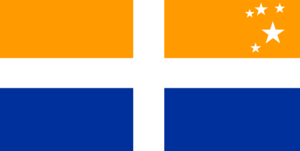Portal:Cornwall
  Cornwall (/ˈkɔːrnwɔːl, -wəl/; Cornish: Kernow; Cornish pronunciation: [ˈkɛrnɔʊ]; or [ˈkɛrnɔ]) is a ceremonial county in South West England. It is recognised by Cornish and Celtic political groups as one of the Celtic nations, and is the homeland of the Cornish people. The county is bordered by the Atlantic Ocean to the north and west, Devon to the east, and the English Channel to the south. The largest urban area in the county is a conurbation that includes the former mining towns of Redruth and Camborne, and the county town is the city of Truro. The county is rural, with an area of 1,375 square miles (3,562 km2) and population of 568,210. Outside of the Redruth-Camborne conurbation the largest settlements are Falmouth, Penzance, Newquay, St Austell, and Truro. For local government purposes most of Cornwall is a unitary authority area, with the Isles of Scilly having a unique local authority. The Cornish nationalist movement disputes the constitutional status of Cornwall and seeks greater autonomy within the United Kingdom. Cornwall is the westernmost part of the South West Peninsula, and the southernmost county within the United Kingdom. Its coastline is characterised by steep cliffs and, to the south, several rias, including those at the mouths of the rivers Fal and Fowey. It includes the southernmost point on Great Britain, Lizard Point, and forms a large part of the Cornwall National Landscape. The national landscape also includes Bodmin Moor, an upland outcrop of the Cornubian batholith granite formation. The county contains many short rivers; the longest is the Tamar, which forms the border with Devon. (Full article...) Selected article There are 167 Sites of Special Scientific Interest (SSSIs) in Cornwall (including the Isles of Scilly). Cornwall, in the south-west of England, UK, has a population of 575,413 (2022) across an area of 3,545 km2 (875,988.6 acres), making it one of the least densely populated counties within England. The north coast of Cornwall falls on the Celtic Sea in the Atlantic Ocean, which also surrounds the Isles of Scilly, the south coast falls on the English Channel and the county is bounded by the River Tamar, forming the border with Devon, to the east. Cornish geology consists mainly of rocks from the Devonian and Carboniferous geological periods. Granite forms a large part of these, with mineralisations of tin, copper, lead and arsenic having been mined in the area. This gives rise to many distinct habitats, with strong marine influences, including sand dunes, rocky reefs, stacks and headlands as well as heathland, moorland and unusual river profiles. In England the body responsible for designating SSSIs is Natural England, which chooses a site "because of its flora, fauna, or geological or physiographical features". Natural England took over the role of designating and managing SSSIs from English Nature in October 2006 when it was formed from the amalgamation of English Nature, parts of the Countryside Agency and the Rural Development Service. Natural England, like its predecessor, uses the 1974–96 county system and as such the same approach is followed here, rather than adopting the current local government or ceremonial county boundaries. Of the 167 sites designated in this Area of Search, the greatest number, 81, have been designated due to their biological interest, with 54 due to their geological interest and 32 for both. The data in the table is taken from English Nature in the form of citation sheets for each SSSI. (Full article...) Selected biography Mark of Cornwall (Latin: Marcus, Cornish: Margh, Welsh: March or Marchell, Breton: Marc'h) was a sixth-century King of Kernow (Cornwall), possibly identical with King Conomor. He is best known for his appearance in Arthurian legend as the uncle of Tristan and the husband of Iseult who engages with Tristan in a secret liaison, giving Mark the epithet "Cuckold King". (Full article...)
Did you know?
Selected quoteSelected picture
General imagesThe following are images from various Cornwall-related articles on Wikipedia.
WikiProjects
Related portalsTopicsHistory
Geography
Politics
Economy and demographics
Culture
SubcategoriesRecognised content
Featured articlesMain page featured articlesFeatured listsGood articles
Former good articlesIn the News articlesThings you can do'
Associated WikimediaThe following Wikimedia Foundation sister projects provide more on this subject:
Wikipedia in CornishDiscover Wikipedia using portals
| |||||||||||||||||||||||||||||||



































































